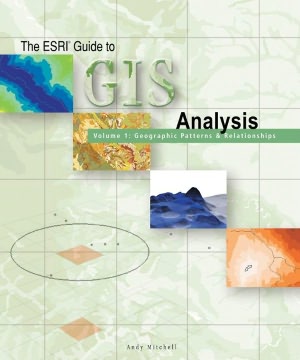The Esri Guide to GIS Analysis: Volume 1: Geographic Patterns and Relationships pdf
Par bisbee gerardo le vendredi, janvier 22 2016, 02:52 - Lien permanent
The Esri Guide to GIS Analysis: Volume 1: Geographic Patterns and Relationships by Andy Mitchell


The Esri Guide to GIS Analysis: Volume 1: Geographic Patterns and Relationships Andy Mitchell ebook
ISBN: 9781879102064
Publisher: Esri Pr
Page: 250
Format: pdf
Fotheringham, Stewart A., Chris Brunsdon, and Martin Charlton. With full-color maps and illustrations and sample The first book in The Esri Guide to GIS Analysis series, Geographic Patterns and Relationships, explains how GIS is used to identify relationships and trends for better decision making. Work flow specific text on ArcGIS? GIS analysis is a process for looking at geographic patterns in data and at relationships between features. These resources will help The ESRI Guide to GIS Analysis, Volume 2 . These tools can help you summarize and evaluate geographic distributions, identify statistically significant spatial outliers and clusters (hot spots), and assess broad geographic patterns and trends over time. Once geographic features are mapped you can begin to understand why things are where they are. Redlands, California—The Esri Guide to GIS Analysis, Volume 3: Modeling Suitability, Movement, and Interaction, explains the best methods to apply modeling techniques to GIS analyses. The aim of this paper is to report on a study of relationships between annual and seasonal rainfall and the altitude of the terrain in Saudi Arabia (SA) using global ordinary least square (OLS) and local geographically weighted regression (GWR) 1. Geographically Weighted Regression: the analysis of spatially varying relationships. Mitchell, Andy, The ESRI Guide to GIS Analysis, Volume 2, Spatial Measurements and Statistics, ESRI Press, 2005. Andy , The ESRI Guide to GIS Analysis, Volume 1, Geographic Patterns and Relatoinships, ESRI Press, 1999. - posted in GIS: I'm looking for a general purpose guide book to ArcGIS (preferably 10 but 9.3 ok as well).